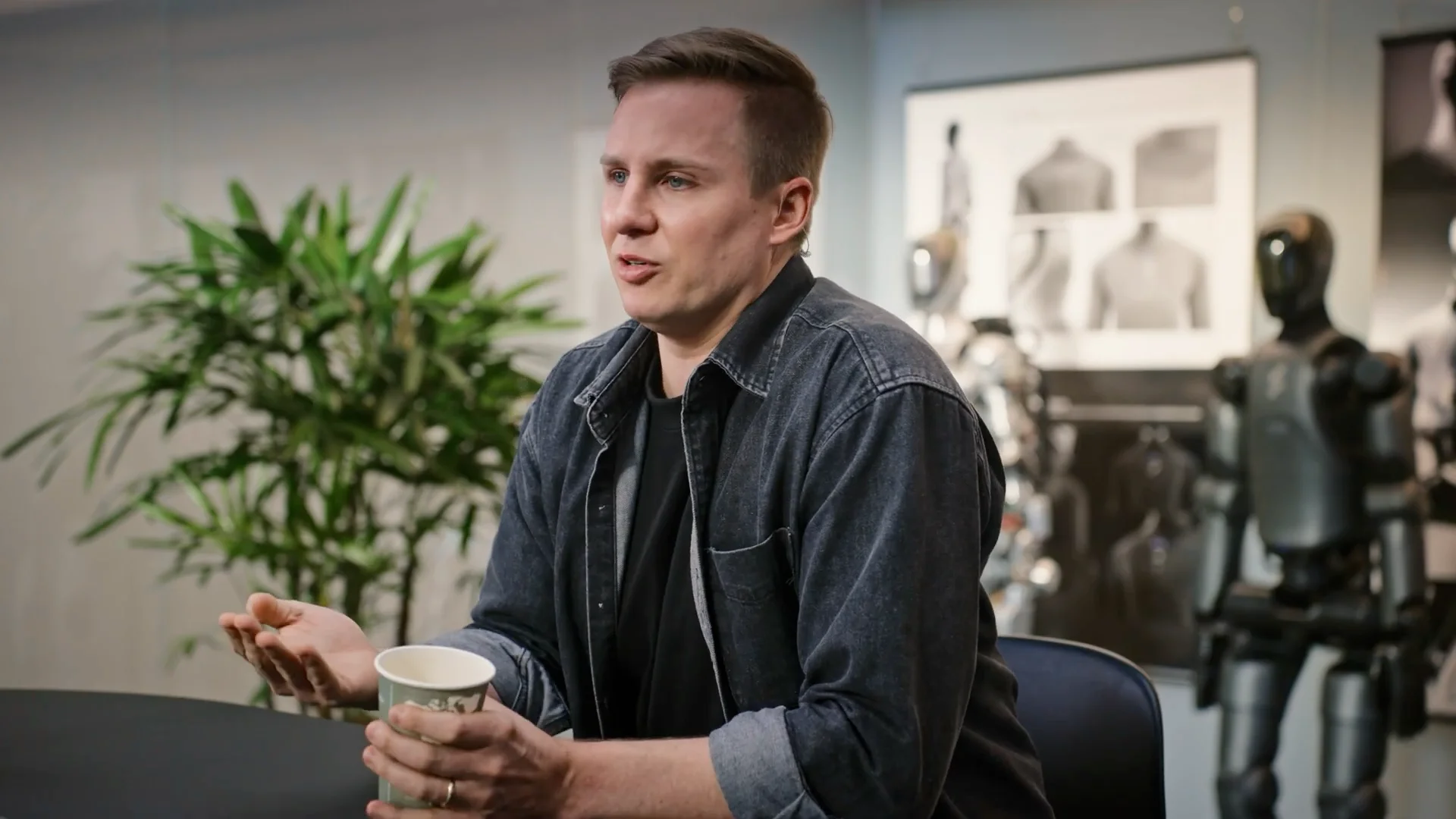- Published on
Figure CEO Escalates Critique of Tele-op Demos, Details Split from OpenAI

Figure CEO Brett Adcock has once again taken aim at competitors using human-in-the-loop teleoperation, calling their public demonstrations "perhaps some of the most deceiving things I've ever seen" in a new interview with investor Nikhil Kamath.
Speaking on the "WTF Online" podcast, Adcock expanded on his "autonomy-first" philosophy, arguing that solving general-purpose intelligence is the only problem that matters—and revealing that Figure ended its high-profile partnership with OpenAI because his team was "just way better at this stuff internally".
Doubling Down on "Deceiving" Demos
When asked about the competitive landscape, Adcock drew a sharp line between Figure's approach and that of its rivals, who he claims are relying on human operators.
"I would say most major competitor(s) to us, at this point, are putting out most of their content and updates tele-opt from a human," Adcock said.
He compared the practice to faking self-driving technology: "If a self-driving car pulled up next to us, we found out there was some guy from Tennessee driving it, we'd both be like, 'That's not what I thought this would look like'".
The comments escalate his previous rhetoric, such as at the NVIDIA GTC 2025 Pregame show, where he famously dismissed the human-in-the-loop strategy as "soy stuff". That strategy is most publicly associated with robotics firm 1X, which has built its "Expert Mode" and its entire pre-order launch around the concept of human pilots gathering data to train AI over time.
For Adcock, this approach misses the entire point. He argues the core challenge is the sheer complexity of the humanoid form, which has 40 joints, leading to more possible positions "than atoms in the universe".
"You can't solve this with code," he stated. "You have to use advanced AI neural nets, to be able to make this really work well".
Why Figure Left OpenAI
Perhaps the most significant revelation from the interview was Adcock's frank explanation for why Figure dissolved its AI partnership with OpenAI in 2025.
"Figure ultimately chose to kind of leave them and go in our own direction," Adcock said. "The summary is that we were just way better at this stuff internally".
He explained that the partnership, which began with OpenAI leading Figure's Series B, created a false perception that Figure was "outsourcing our AI". This, he claimed, hurt recruiting and belied the reality that Figure's internal team was doing most of the work.
"It's not just sitting in a room training models and throwing it over a fence... This is hardware. You gotta be able to sit there with the robot and get it to work," he said. "The buck stops at being on robot and making that stuff work. And the team here is just the best in the world at being able to do this".
On the Race with China
Adcock also flatly rejected the common narrative that China is leading the robotics race. When asked about the perception, he responded, "Yeah, I just don't believe this".
He argued the competition is being mischaracterized as a manufacturing race, which he believes is the wrong lens.
"We are in a race to solve general purpose robots. We are not in a race against China in manufacturing robots right now," Adcock argued. "It doesn't matter if China makes a million humanoid robots tomorrow. They just don't work very well, to be frank".
This directly echoes his argument from the GTC panel, where he stated the "real race" is for intelligence, not manufacturing. He reiterated that building humanoids is a "consumer electronics manufacturing process" —a "tractable and surmountable problem" —not a complex automotive one.
A New, Aggressive Timeline for the Home
While Adcock has previously discussed safety as a high bar for home deployment—telling Kamath he would not let his robot "roam free" with his young kids today —his timeline for achieving that goal has become radically more aggressive.
He revealed a major shift in his thinking, placing the home market in his immediate line of sight.
"My view on this has completely flipped last year," Adcock said. "I think the home is near-term. I think a home is solvable. I think we're basically data bound at this point".
To solve this, he announced a new internal initiative, "Project Go-Big", with the goal of building the "largest Internet scale pre-training set for robotics in the world" by capturing human data in homes. (Also read: Generalist AI Unveils GEN-0, Claims Scaling Laws for Robotics Backed by 270,000 Hours of Real-World Data)
This new position is a stark departure from the moderate timeline he offered at the GTC panel, where he projected the home market would "definitely be solvable... in like this decade" and compared it to the difficult problem of "car autonomy in a city".
His new "near-term" claim sounds much more like the aggressive timeline he presented at Dreamforce, where he claimed a robot could perform general-purpose tasks in an unseen home as soon as "next year".
The interview solidifies Figure's high-stakes bet: that true, general-purpose autonomy is the only viable path, and that the company must solve the entire stack—from data collection and AI models to the hardware itself—all on its own.
Watch the interview:
Share this article
Stay Ahead in Humanoid Robotics
Get the latest developments, breakthroughs, and insights in humanoid robotics — delivered straight to your inbox.